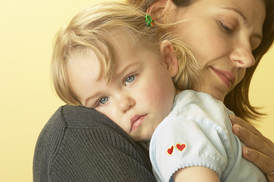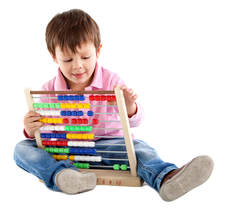 Learning a second language has proven to be very beneficial for children. As a childcare professional, you can provide opportunities for children to expand their cultural awareness and improve their cognitive development by teaching them another language. Whether through song, dance, counting, etc; no matter which method you choose, you will be creating an environment that encourages children to explore diversity. Below are some questions and answers that may be helpful for you as a childcare professional to implement Spanish in the Early Childhood Classroom. Question: Is it true that bilingual children begin speaking later than children that speak one language? Answer: This is an interesting observation and I hope I can help to answer your question. I cannot say definitively whether this is common or just a coincidence. I think it’s important to consider language acquisition and the speaker’s native language versus second language. Think about the time and effort needed to feel confident enough to speak your native language to others who don’t also speak it. Also, consider how it might feel to speak a new language when you are not confident quite yet. Children are very social and will communicate in many ways, even with a language barrier, but children learning a second language could possibly take a bit longer for several reasons. This also isn’t considered typical or atypical. Consider the individual and document your observations and communicate with parents as well. Question: How can I get parents involved in learning a second language? Answer: You can send home a newsletter or worksheets stating the words that you are working on. Depending upon the ages of your students I would also consider doing something more involved. Ask them to go home and teach one family member a new word in Spanish. Ask children to interview parents or other family members about their foreign language abilities. There are many options that can extend this even further. Question: How and when is a good time to start integrating Spanish into our curriculum? Answer: Many Early Childhood Educators begin introducing Spanish to young children during calendar time or circle time. They often combine Spanish and English and continue to build on known words throughout the school year. Another option is to begin with greetings or departures. Use the same phrase in Spanish to greet the children each day either when they come to the center or join circle time. In addition to these suggestions you may find that songs in Spanish are a great tool for teaching the language. For example singing the Spanish version of Twinkle Twinkle Little Star is a fun version of the song that gets children learning new words in a new language! The important thing to remember when introducing a new language to young children is to keep building more and more, and to stay consistent in practicing acquired words and adding new ones to your lessons. For more information on Spanish in the Early Childhood Classroom, register for our one hour course: https://www.cdastars.com/store/p254/Spanish_in_the_Early_Childhood_Classroom.html Have information to share? Please use the comments section below...
1 Comment
 Most people want to feel supported and valued in their place of employment. Being in an environment that is positive and respectful motivates employees to do well in their job and to stick around. If you have high employee turnover, it may be that your employees are not motivated to stay. You may need to evaluate what is important to each employee and help support them in a way that makes them feel encouraged and appreciated. This could range from thank you’s that show appreciation to simple stress-less techniques that allow employees to cope with their frustrations. Having these things in place may help increase employee longevity in your program. Below are some questions and answers that may help you as a childcare professional, whether you are the director of a program or a teacher in a program. Question: I don’t feel supported at work, what would you recommend to help me stay motivated? Answer: It is important to be able to advocate for yourself as an educator and childcare professional. If you feel that you are not getting the support that you need you will want to professionally bring this up with your director and offer some ideas for further support. Keep in mind that education is a stressful and greedy career that demands a lot from people. There will be many things that you can do personally to lighten your stress and there are possibly things that your center or director can help with as well. Some suggestions that I often give professionals are to find ways to simplify their daily tasks and ways to destress. For some people that means relying on support staff for more help. Other times it means cutting out the smaller things that are truly unimportant or getting your students involved in some tasks to simplify your day to day routines. Question: Is it a good idea to have a “teacher of the month”? Answer: Teacher of the month may be beneficial to motivate some teachers and may do the opposite for others. It is important to know your staff before making these decisions. Some programs will actually have students vote for teacher of the month and that seems to have a very positive influence on morale. After all, children are the reason we teach! Question: I am the only person running my in-home daycare, what resources would you recommend so that I don’t burnout? Answer: Since you are not going to have any staff to mentor and support I would recommend researching some self-care and burnout prevention resources. It is important that you take care of yourself so that you can run at optimum level and not feel overwhelmed or overworked. Here are some resources that you may enjoy: Question: I am a highly sensitive person and tend to be more empathetic, which I believe causes me to feel more exhausted after work than the typical person. Do you have any suggestions that will help me from getting burned out? Answer: Working with children and having those extra perceptual tendencies as you do can definitely take a toll on your energy level at the end of the day. If you are like most child care providers you have an absolute passion for the wellbeing and success of all children. This often means that you put their wellbeing before your own. My first piece of advice is to find the balance in this. It is challenging to do initially, but if you are able to balance your needs with your work demands you will find that you are a better educator. Take deep breaths and short breaks if things get overwhelming. Ask for help and delegate tasks if you need to. Next, consider a low impact activity after work each day such as yoga or meditation. These may not be your preference but something that requires little energy on your part and a relaxing environment may be extremely beneficial. Make this your transition routine from work to home life and see if that helps you to feel less drained. My last piece of advice is to accept that you cannot take on the entire world and fix it, though I guarantee that you wish you could. Try not to get wrapped up in the negativity of things around you and instead see the positive and try to be a part of that. For more information on Mindful Leadership, register for our three hour course: https://www.cdastars.com/store/p451/Mindful_Leadership.html For more information on Motivating Morale: Keeping Staff Around, register for our two hour course: https://www.cdastars.com/store/p591/Motivating_Morale%3A_Keeping_Staff_Around.html For more information on Preventing Teacher Burnout, register for our one hour course: https://www.cdastars.com/store/p251/Preventing_Teacher_Burnout.html Have information to share? Please use the comments section below...
Children are natural observers and have an innate sense of curiosity. From watching a caterpillar crawl along the ground to making mud with water and dirt, children are naturally interested in watching the world around them at work. As a childcare professional, you should provide safe, fun, and age appropriate science activities and opportunities for the children in your care. Below are some questions and answers that may help you incorporate scientific type activities to the children in your program. Question: Can you provide science activities that I can do with a classroom of 18-24 month olds? Answer: It is important to keep in mind that mostly what children in that age range do naturally is scientific exploration. You can simply provide the opportunities for children to do the explorations. Here is a link to our resource website for specific lesson plan ideas: http://www.lessons4learners.com/toddler.html Question: What kind of science materials would you recommend for a toddler class? Answer: There are tons of objects and materials that you can use for toddlers. As with all things in child care please be sure to exercise caution with your choice of materials and make sure that none provide a choking hazard and that proper supervision is always given. Consider existing materials paired with new materials for scientific exploration. For example, blocks and some natural materials are a new way to explore. Sensory bins and other sensory materials are a common material in many programs and is a wonderful scientific exploration! Consider rotating the sensory materials to fit current curriculum and focusing on scientific concepts such as curiosity and discovery. Here are some links to ideas about toddler science materials. Please be sure to use care in considering these materials and provide proper safety standards at all times. Question: Can you provide more resources for infant and toddler science project ideas? Answer: We provide a resource website with tons of lesson plans that you can access and use in your classroom. Here are two links that may be helpful: http://www.lessons4learners.com/young-infants.html http://www.lessons4learners.com/mobile-infants.html In addition to the information found above we recommend taking our training course Simple Science for Infants and Toddlers which also provides Lesson Plans throughout the training. Here is the link if you are interested in registering for the class Simple Science for Infants and Toddlers: http://www.cdastars.com/store/p453/Simple_Science_for_Infants_and_Toddlers.html Question: How do I make science fun for all ages? Answer: A very simple way to make science fun for every age is to pay attention to what interests your group and make it student-led. For infants and toddlers there are some limitations especially where safety is concerned but if you plan the lessons carefully you can ensure safety and fun where science is concerned. Here are some resources that you may find helpful: For more information on Simple Science for Infants and Toddlers, register for our three hour course: http://www.cdastars.com/store/p453/Simple_Science_for_Infants_and_Toddlers.html Have information to share? Please use the comments section below...
 Biting can be frustrating for parents, teachers, and the children themselves. Even though it is a phase that a child usually works his or her way out of, having a solution on hand can help to alleviate the potential stress it can cause. As a childcare professional, it is essential for you to learn the acceptable ways to handle these situations. Below are some questions and answers that may help you deal with biting in your classroom. Question: How do I deal with a child that bites the same child each day? Answer: If the child that is biting is a toddler, that is an age that it is developmentally anticipated behavior. It is your responsibility as the caregiver to anticipate the behavior, and find solutions to reduce the frequency of it occurring until the child grows out of the phase. If the biter is biting the same child, then one solution would be to take steps to keep the two children separated. Place your own body between the two of them, and use distraction and redirection techniques. When you have a child that is biting, always stay close to them, and watch them continuously. One technique I used is the surprise-redirection. If we were outside and I saw a child about to bite or hit, instead of saying “Charlie don’t bite!” Instead, I would say in my loudest most excited animated voice “OH, look, there’s a plane!” while pointing at the sky, “Charlie, can you be an airplane?” (and I would start making airplane sounds with my arms out to my side) this would distract Charlie from biting. While in the classroom, I would change this to “OH Look a spider!” and I would point up at the ceiling and say “Charlie, do you see the spider? Who can walk like a spider?”. Take the time to observe the child that is doing the biting, watch for clues to when the biting is occurring. Is it during transition time? Is it when he/she is hungry? Look for ways to change the environment or the routine to eliminate the situations that are triggering the biting behavior. Remember that this is just a phase, and all children do outgrow the biting behavior. The phase will pass much quicker if you are able to help them through it in a positive way that allows all children to establish a sense of security. Question: What can I do if parents become upset about their child biting other children or being bitten by other children?  Answer: It is important for child care professionals to document biting behaviors and the behavior that comes before the incident as well as the action taken by the professional. Keep record of the incidents and when parents are upset or confrontational about biting you can refer to your data and explain the preventative measures taken by staff as well as the specific circumstances, and how the behavior was handled. Above all, biting behavior is completely normal for toddlers and maintaining a quality program that responds to these behaviors is the best thing you can possibly do. Parents will know and understand this as well, and you can build a partnership moving forward. Question: How do I get a child to just stop biting? Answer: There is no magic wand solution to infant and toddler biting. If there were, it would have been the first sentence of the first page in our Ouch! Infant and Toddler Biting course! The bottom line is that biting is developmentally typical for infants and toddlers. It is going to happen and it is important to be aware of what causes it and the things you can do to help curb it. For more information on Ouch! Infant and Toddler Biting, register for our one hour course: https://www.cdastars.com/store/p250/Ouch_Infant_and_Toddler_Biting.html Have information to share? Please use the comments section below...
 Although you may not sit down and teach math to young children as a structured activity, they are constantly exposed to math concepts in their environment. From stacking blocks to sorting colors, these different activities allow them opportunities to expand their minds in order to learn new concepts. Allowing time for these activities is essential for a child's growth and development. Below are some questions and answers that may help you as a childcare professional in regards to exploring math in the classroom. Question: Will labeling an infant’s surroundings help them develop math skills? Answer: Yes, this can support a language and text rich environment for infants, and as they grow and become more aware of these words and labels they will absorb them more and more. The other important thing to realize about math is that there are many vocabulary words that labels and print rich environments can help with. The more you can expose children to the language of math, the better situated they will be for developing those number skills. Question: How do you encourage math exploration when the children do not seem interested? Answer: It is important to realize that math exploration is included in almost every activity that an infant or toddler participates in. The block building area is a prime example, even if the children are not counting or sorting the blocks, they are still experimenting with spatial awareness and concepts of size and position. Try adding colored blocks to the block area or different types of blocks to add more math concepts. Another suggestion is to add more math concepts to activities that your group really likes. Do they love singing and music? The rhythm in the songs has a pattern and repetition to it that supports math concepts. Try a fast or a slower song. Let them listen to the beat and help them clap along.  Question: What are some good resources to help toddlers learn to count? Answer: Toddlers differ in their amount of fine motor control, so objects that can be sorted, classified, and manipulated easily are great places to start with counting. Some resources that you may find useful are: Question: How are colors connected to learning math skills and concepts? Answer: We provide several categories of mathematical concepts that can include colors in our course Math Exploration for Infants and Toddlers. Though this is not an exhaustive list by any means it gives you an idea of some of the ways color is represented through math. If you are interested in enrolling in the course, please use this link to register: http://www.cdastars.com/store/p450/Math_Exploration_for_Infants_and_Toddlers.html For more information on The Math Learning Center, register for our one hour course: http://www.cdastars.com/store/p552/The_Math_Learning_Center.html For more information on Math Exploration for Infants and Toddlers, register for our three hour course: http://www.cdastars.com/store/p450/Math_Exploration_for_Infants_and_Toddlers.html Have information to share? Please use the comments section below...
|
Blog Author
Archives
January 2018
Categories
All
|
Successful Solutions Training in Child Development
Enrollment HoursMonday - Friday 7 am – 8 pm
Saturday & Sunday 9 am – 8 pm Holidays 9 am – 8 pm |
Telephone(360) 602-0960
|
info@mycdaclass.com
|
Registrations that are submitted after enrollment hours will be processed the next morning. You will receive an email with your log-in information to access the course within an hour after we open the next business day.



 RSS Feed
RSS Feed

